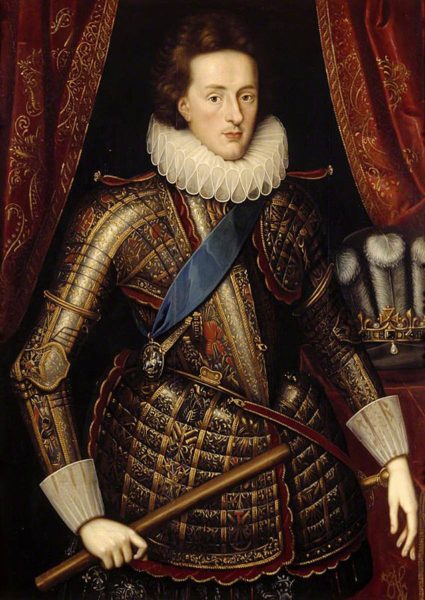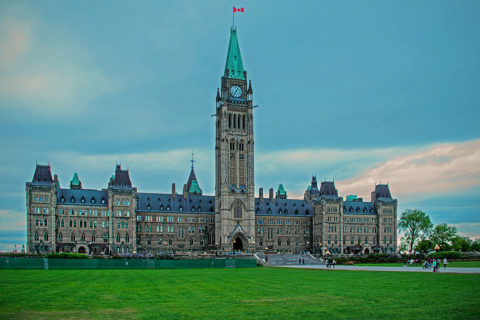Sparta had a formidable military reputation, but their actual battlefield performance hardly backed it up. During the fifth and fourth centuries, Sparta lost as often as it won. Spartan battlefield tactics were a bit better than other Greek poleis, but this is damning with faint praise. The Spartiates themselves were mostly like every other group of wealthy Greek hoplites. But the Spartan military reputation was extremely valuable – the loss of that reputation during the Peloponnesian War does much to explain the rough decades Sparta would experience following its end.
That is one of the core things we can learn from Sparta: a reputation for military excellence can often be more valuable than the excellence itself – real or imagined. A powerful army can only fight one battle at a time, but the idea of a powerful army can intimidate any number of enemies all at once. […] when Sparta was forced to turn from intimidation to force, it ran out of force with frightening speed.
Those who have been here for a while may already be wondering, “Wait, though – this is the guy who is always telling us that winning battles isn’t as important as achieving strategic objectives and who is always on about logistics and operations! What about that?” I think that actually goes a long way to explaining how an army with a modest advantage in tactics and organization ends up without a winning record. […] I want to stress something here: the horrors of Spartan society cannot be justified on the grounds they produced superior soldiers, because they quite evidently did not. Sparta’s actual military record was, in fact, depressingly average. Only the reputation was special; the men were just men.
Bret Devereaux, “Collections: This. Isn’t. Sparta. Part VI: Spartan Battle”, A Collection of Unmitigated Pedantry, 2019-09-20.
May 18, 2022
QotD: Sparta’s excellent military reputation was not matched by actual battlefield excellence
May 17, 2022
Mary Whitehouse, “The avenging angel of Middle England”
At First Things, Jonathon Van Maren considers the legacy of Mary Whitehouse, the often mocked champion of public decency and crusader against pornography and blasphemy in the media from the mid-60s onwards:

I was surprised to find few public domain images of Mary Whitehouse available, so here is a selection of thumbnails (hopefully this won’t violate any copyright restrictions)
We have reached the point where our post-Christian elites, having safely enshrined the sexual revolution in law, can afford the luxury of occasionally admitting that their opponents were right. Exhibit A is the new BBC documentary Banned! The Mary Whitehouse Story, which details the life of Great Britain’s most infamous morality campaigner. Beginning with a crusade to keep smut and blasphemy off TV in 1964, Whitehouse rallied hundreds of thousands of women (and ordinary Britons) to her campaigns against “the permissive society”, culminating in her war against the porn industry. Alas, she lost most of her battles — but her warnings proved prophetic.
Mary Whitehouse was born in Warwickshire in 1910. She first started organizing in the 1960s because she — and millions of other mothers — did not like what her children were seeing on TV. A committed traditional Christian, she watched with dismay as the country she loved began to change around her. The metropolitan elites she faced off with thought she was “a provincial Birmingham housewife”. They didn’t underestimate her for long. She hosted her first mass meeting in 1964, and her organizing skills soon highlighted the subterranean power of Britain’s women. Whitehouse tapped into the gardening associations, the mothers’ unions, and other grassroots community organizations filled with folks who cared deeply about their children and the moral fabric of their nation. She brought them together, and when she spoke, it was with the voices of legions of little people. Her nickname summed it up: “The avenging angel of Middle England”.
Whitehouse’s first major campaign was to “Clean Up TV”, and her parliamentary petition to that end garnered around 500,000 signatures. In 1971, Whitehouse began organizing against sex ed in schools, triggered by an “educational” video she saw that was filled with pornographic scenes. Whitehouse was accused of hysteria — but Banned! features a pornographer admitting that, by using sex ed, “we gradually pushed back the barriers”, much as Whitehouse warned they would. Now that they’ve won, they can admit they were lying.
Whitehouse and others appalled by attempts to corrupt their children were accused of being “horrified by sex”. In reality, they were horrified by the version of sex presented by sex educators — in much the same way an art lover would be appalled to see vandals approaching a great masterpiece with cans of spray-paint and lewd laughter. Progressives never understood this, and consequently Whitehouse has been almost entirely defined by what she fought against rather than what she fought for.
Whitehouse’s lobbying resulted in several pieces of legislation, including the 1981 Indecent Displays Act, which sought to restrain sex shops and the display of porn, as well as the 1984 Video Recordings Act, intended to limit the sale of extreme video content. Unfortunately, these acts were rendered moot by the internet. But her greatest achievement was the 1978 Protection of Children Act, which criminalized child pornography. It seems remarkable that such a law did not already exist, but in the ’70s the Paedophile Information Exchange (PIE) was operating openly in Britain; it was supported by some British elites who believed that sex with children was the natural next step in sexual liberation.
The Crusades: Part 6 — The Loss of Jerusalem
seangabb
Published 27 Feb 2021The Crusades are the defining event of the Middle Ages. They brought the very different civilisations of Western Europe, Byzantium and Islam into an extended period of both conflict and peaceful co-existence. Between January and March 2021, Sean Gabb explored this long encounter with his students. Here is one of his lectures. All student contributions have been removed.
(more…)
The Canadian government has a much more expansive view of “use of journalistic content” than most Canadians do
Michael Geist continues looking at the differences between what the Canadian government says they’re trying to do with their Online News Act (Bill C-18) and how the actual wording of the bill will operate:
But is it reasonable to legislate that posting a news headline constitutes making that news content available? Can Canada even do that and still remain compliant with international copyright laws under the Berne Convention which require countries to feature an exception for quotation? Indeed, international copyright law recognizes the critical importance of enabling quotation free from limitations as an essential element of expression, yet Bill C-18 adopts an approach that may violate that principle by requiring compensation for quotation.
Sub-section (b) moves far beyond reproduction into a realm that bears little resemblance to use or a reasonable definition of “making available”. It covers facilitating access to news by any means. In what way is facilitating access to news the same as making it available (much less using it)? A facilitating access to news standard is virtually limitless: newsstands, news screens in elevators or taxis, television manufacturers, or newspaper box makers can all be said to be facilitating access to news. The bill limits its scope to DNIs, but the policy principle that this bill is simply compensating for the use of content is twisted beyond all recognition.
In fact, it is clear that this extreme approach is precisely what the government intends. By citing examples such an indexing, aggregation or ranking of news content it is saying that virtually anything that a platform does – linking to news articles or merely to news organizations, indexing content at the request of the news organization (even if the actual content is not openly available as is the case with paywalled sites), or creating a list of news articles on a given topic are all “facilitating access to news content” which requires compensation.
Would Canadians agree that this link to the front page of the Globe and Mail is making the Globe‘s available? If this link appears on Google or Facebook, the government says that it is. If someone searches for newspapers in Montreal to learn more about developments in the city, is the list of newspapers in that city making the content available? Once again, the government says that it is.
The initial debate on Bill C-18 featured several interventions about the problems of misinformation. In light of the actual provisions in the bill, claims that it simply requires compensation for use might ironically be fairly characterized as misinformation. Unfortunately, the problematic claims associated with the bill don’t stop there as tomorrow’s post on market intervention will illustrate.
History of Rome in 15 Buildings 09. The Arch of Constantine
toldinstone
Published 27 Sep 2018The many statues and reliefs from older monuments integrated into the Arch of Constantine – the focus of this ninth episode of our History of Rome – advertise the continuity of traditional Roman values into the fourth century. The Arch’s inscription, however, alludes to the religious revolution set in motion by the first Christian emperor.
If you enjoyed this video, you might be interested in my book Naked Statues, Fat Gladiators, and War Elephants: Frequently Asked Questions about the Ancient Greeks and Romans. You can find a preview of the book here:
https://toldinstone.com/naked-statues…
If you’re so inclined, you can follow me elsewhere on the web:
https://www.reddit.com/r/AskHistorian…
https://www.instagram.com/toldinstone/To see the story and photo essay associated with this video, go to:
https://toldinstone.com/the-arch-of-c…
QotD: Slavery
There is no doubt, if you read history, that people in the past treated other people very badly. We still do, too, but I guess it’s much more awful when society is not quite so affluent and when being on the bottom can mean starving to death. It is impossible to read history, particularly primary sources, and not to be horrified.
But part of that is that we’re imposing our values on the past. Look, history is looked at backwards, while we live forward. Take slavery (I don’t want it.) Yes, it was a horrible institution. It was also pervasive in human history, and as far as we can tell pre-history, world without end. Hell, still is as well, considerably less of the world than it was, but in Africa it’s pretty much still a thing, and not just in Arab countries.
Romans had complex rules to deal with it, and lived in fear of slave revolts.
It required mental gymnastics, because it was obvious to anyone that slaves were as human as their masters, and so a complex set of rules and philosophical separations were instituted and once any idea of the equality of man (or that man ought to be equal before the law (and G-d) the whole thing was doomed, sooner or later.
Americans tend to have a bizarre idea that slavery was always by race. I blame public school. I don’t know if it’s deliberately obscured, to emphasize the specialness of racial victimhood, or just because race and slavery are so associated in American history that it overshadows everything else. (Yes, again, is it malice or stupidity? Perhaps we should formulate an axiom that sufficiently advanced stupidity is indistinguishable from malice.)
Men and women of all colors were enslaved throughout history. Heck, in the peninsula, in the long centuries in which it was a frontier between Christian and Moor, the slaving went on both ways. […]
Roman slaves were often blond, and the citizens often of African origin. But even there, it wasn’t tied to race. (Though celts were apparently in general fairly cheap, from what I can figure.)
So. All of us have slave ancestors. ALL OF US. All of us have slave owners in our ancestry.
Even in the US — though rare — there were black slave owners. And if you’re going to parse quadroons and octaroons who might very well be slaves, you’re going to assume race is one-drop but only for non-white races.
Sarah Hoyt, “I Am Myself Alone”, According to Hoyt, 2019-02-25.
May 16, 2022
Heaviest Air Raid in Human History – WAH 060 – May 15, 1943
World War Two
Published 15 May 2022As the Warsaw Ghetto Uprising is being quashed, there are renewed Japanese atrocities in China, and the RAF sets a world record by bombing German civilians.
(more…)
The Hudson’s Bay Company in Canadian history
As a kid growing up in the late 60s and early 70s, “The Bay” was just a department store. It wasn’t as upscale as Eaton’s, but had different stock than Eaton’s or Simpson’s so occasionally you’d find something there that wasn’t available in the other major central Canadian department stores. It took me an embarrassingly long time to make the connection between the big retail store in the mall and the company that owned vast swathes of what eventually became Canada in the seventeenth and eighteenth centuries. At Terra Nullius, Ned Donovan tries to put that massive geo-political organization into context:
At the turn of the 17th Century, felt hats were all the rage and felt hats are made of beaver skin. At the time, this relied on Russia’s long-established fur trade. But as demand grew, quality dropped significantly as the native European beaver population began to be hunted out of existence. Within decades, it was very difficult for merchants to find high quality felt from Russia, and customers in England were complaining that they were having to wear felt made from rabbit instead.
Approximate extent of Prince Rupert’s Land in the late 17th to early 18th century – note that this is the range of the company’s trappers and traders, not military or political control.
Image from Wikimedia Commons.But around the same time, irregular and rare shipments began to arrive from the European colonies in North America where beaver – mostly trapped by French settlers and Indigenous Americans – was still plentiful and of very good quality. In 1669, the ship Nonsuch dropped anchor in the Thames with a large shipment of some of the highest quality furs London had ever seen, selling them immediately for £1,233 (equivalent to around £1 million in 2022). The Nonsuch had led an expedition invested in by some of London’s richest merchants and sponsored by Prince Rupert, a first cousin of King Charles II. It had done its trapping in Hudson’s Bay in the north of what is now Canada. The purpose of the expedition was to demonstrate that the issues with fur supply could be solved if its trapping in North America could be optimised, leaving behind the slow and traditional approach of the French and First Nation trappers.
This was not the first time Prince Rupert had seen to make money from exploiting colonised lands, having poured large amounts of his wealth into the slave trade from West Africa and sitting on the board of the Royal African Company. With this financial success made from trading in human lives, he turned his interest to North America and helped put together the syndicate that sent the Nonsuch to Hudson’s Bay. In 1670, his cousin King Charles II granted the syndicate a royal charter to form the Hudson’s Bay Company, giving the company a monopoly over “Prince Rupert’s Land” made up of the land drained by rivers and streams flowing into Hudson’s Bay – or 3,861,400 square kilometres.
In short order, the company had established trading posts throughout its monopoly, known as factories (as each was controlled by a company official known as a factor). The only thing that mattered to these factories and its parent company was beaver. Nothing could stand in the way of ensuring the safe passage of furs and pelts to Europe. By 1690, the demand in England for hats and caps was five million per year – or one per person. Hundreds of thousands more would be exported onwards from England to Europe such was the demand for the well-known quality of the Hudson Bay beaver. For example in 1756, Portuguese customers spent more than £20 million in today’s money on English beaver felt hats.
As Prince Rupert’s Land was largely still wilderness, besides company staff it was inhabited only by European and First Nations trappers and as a result there was only a barter economy, to both subjugate indigenous residents and prevent private wealth. There were standardised prices throughout Prince Rupert’s Land and instead of a normal currency, the company instead pegged everything against the unit of 1MB (1 Made Beaver). For three made beaver pelts, you could be given one clay pot in exchange at a company store, or for 10 you could get a gun. Private trading was outlawed and all beaver pelts that left Prince Rupert’s Land traveled through the warehouses and accounts of the Hudson’s Bay Company.
Look at Life — The Flying Soldier (1965)
QotD: The difference between surface meaning and actual intent
A basic truism is that languages don’t map exactly over each other and that’s the most likely explanation for this database from China detailing “BreedReady” women. That languages don’t map exactly should be obvious even to the most monolingual of English speakers. We all know that “Let’s have lunch sometime” when said by an American means “Hope to see you never and definitely not while eating”. Similarly, “That’s lovely” when said by a Brit does not necessarily mean it is lovely and “How quaint” isn’t praise for the cuteness of the thing. A Californian invocation to meet Tuesday is in fact a rumination on the possible non-existence of Tuesday.
Tim Worstall, “That Chinese ‘BreedReady’ Database – Check The Translation”, Continental Telegraph, 2019-03-11.
May 15, 2022
Bill Kristol’s as-yet-unexplained defection from conservatism
In the free-to-cheapskates excerpt from the latest Weekly Dish, Andrew Sullivan charts the political pilgrimage of a former right-wing stalwart to being “hugely popular among MSNBC Democrats”:

Bill Kristol at a political conference in Orlando, Florida, 23 September, 2011.
Photo by Gage Skidmore via Wikimedia Commons.
If you live long enough, and haven’t been lobotomized, you’ll change a lot of your views and opinions. Life does that. The world changes; you change; and for most people, who don’t air their views publicly for a living, the process is murky.
For the rest of us, the hacks/public intellectuals, I think there’s another standard: if you change your mind on an issue, at some point, explain why. What principles or ideas have you now abandoned? Which have you now embraced? What new facts have you learned? It’s a basic form of intellectual hygiene.
Which brings me to Bill Kristol. You may recall him as the former gatekeeper of Republican orthodoxy and much of its intelligentsia; architect of neoconservative foreign policy; adviser to US presidents; pundit; smooth-talker; operator. Now hugely popular among MSNBC Democrats, alert to racism and sexism and homophobia, Kristol has, these last few years, performed a spectacular ideological self-reinvention that makes J.D. Vance look like a man of unflinching consistency. And he has never even attempted to explain why.
Take for a moment the issue du jour: abortion. Very few people have spent years and years, as Kristol has, campaigning with a singular determination to overturn Roe v Wade. Here he is in 1998:
Republicans talk a lot about being a majority party, about becoming a governing party, about shaping a conservative future. Roe and abortion are the test. For if Republicans are incapable of grappling with this moral and political challenge; if they cannot earn a mandate to overturn Roe and move toward a post-abortion America, then in truth, there will be no conservative future.
A year earlier, Kristol had been even more emphatic:
The truth is that abortion is today the bloody crossroads of American politics. It is where judicial liberation (from the Constitution), sexual liberation (from traditional mores) and women’s liberation (from natural distinctions) come together. It is the focal point for liberalism’s simultaneous assault on self-government, morals and nature. So, challenging the judicially imposed regime of abortion-on-demand is key to a conservative reformation in politics, in morals, and in beliefs.
This is more than a pro-life position. It is the articulation of a thoroughgoing pro-life conservatism designed to end judicial intervention in politics, reverse the sexual revolution, and restore distinctions between men and women rooted in biology and nature. It couldn’t be more GOP 2022! The man was a visionary. And so you might imagine that when Kristol’s vision came to final fruit in 2022, he’d be over the moon.
But no. After Trump became GOP leader and put three pro-life justices on the Supreme Court, Kristol barely mentioned abortion on his Twitter thread — except to take a swipe at “the Republican political class — at once cavalierly uncaring about the women they seek to represent and manifestly insincere about the pro-life beliefs they claim to hold.”
The End of the War in Africa – WW2 – 194 – May 14, 1943
World War Two
Published 14 May 2022With the end of the Tunisian Campaign, the Allies have won the war for the African Continent. What next? They meet at the Trident Conference in Washington DC to try and figure that out. Meanwhile, the fight in the field continues — in Burma, the Aleutians, China, and the Kuban.
(more…)
The young man who might have been King Henry IX of England
In the latest Age of Invention newsletter, Anton Howes considers what might have been had the eldest son of King James I and VI lived to take the thrones of England and Scotland:

Portrait of Prince Henry Frederick (1594-1612), Prince of Wales by Isaac Oliver
National Trust, Dunster Castle; http://www.artuk.org/artworks/prince-henry-frederick-15941612-prince-of-wales-99804 via Wikimedia Commons.
Henry Frederick, Prince of Wales, was the eldest son and heir of James I of England. He would presumably have become Henry IX had he managed to outlive his father. But he died in 1612 aged just 18. The kingdom instead ended up with his younger brother Charles I and civil war. I’m not sure how far Prince Henry was influenced, but it seems that many of the major innovators of the period were purposefully cultivating him as a kind of inventor-scientist king.
It reminds me of a very similar and successful scheme, which I noticed when researching my first book on the history of the Society for the Encouragement of Arts, Manufactures and Commerce. This was the scheme to cultivate George III — famed for his madness and losing the Thirteen Colonies, but also for his collection of scientific instruments and interest in agricultural innovation. Those interests were no accident: his upbringing had included lessons in botany from the inventor Stephen Hales, in art and architecture from William Chambers, and in mathematics from George Lewis Scott. These were not just experts, but active innovator-organisers. Hales was a key founder of the Society of Arts; Chambers helped organise the artists who split off from it to form the Royal Academy of Arts; and Scott was involved in updating Ephraim Chambers’s Cyclopaedia, or Universal Dictionary of Arts and Sciences — an early encyclopaedia focused on technical knowledge. And their efforts bore fruit. Unlike his predecessor and grandfather George II — whose interests mainly fell under the headings of Handel, Hanover, hunting, and heavy women — George III became an active patron of science, invention, and the arts.
Given how successfully the inventors cultivated George III, it makes me wonder how things might have looked had Prince Henry lived to be king. His younger brother Charles I had an education heavily geared towards languages, theology, and overcoming various health issues through sports. But Henry — naturally athletic and charismatic — had an upbringing tightly controlled by Sir Thomas Chaloner, who had a major financial stake in innovation.
Chaloner housed and supported his alchemist cousin (also, confusingly, called Thomas Chaloner). This cousin had published an early treatise on the medical applications of saltpetre, or nitre (what we now call potassium nitrate), and had tried to produce alum on the isle of Lambay, off the coast of Ireland. Alum was a valuable substance used to fix cloth dyes, which had hitherto been monopolised by the Pope, who owned Europe’s only alum mine. Opening a competing, English-controlled, Protestant supply of alum was not just about starting a new industry. It was a matter of Europe-wide religious and strategic urgency.
[…]
Henry’s circle also included the Dutch polymath Cornelis Drebbel, who would become famous all over Europe for travelling in a submarine under the Thames, for his improvements to microscopes, and for inventing a perpetual motion machine (which isn’t as silly as it sounds — it was effectively a kind of barometer, exploiting changes in temperature and air pressure to move).
And that’s just the tip of the iceberg. The more I look into the circle of inventors around Prince Henry, the more familiar names crop up. There even seems to be some connection to Simon Sturtevant, one of the original patentees of a method to make iron by using coal instead of wood — Chaloner was seemingly responsible for evaluating Sturtevant’s inventiveness, to see if he merited a patent. I found it very striking that when Sturtevant’s iron-making business was about to get going, Prince Henry was to have a share.
Given such innovative company, we can only imagine what kind of a king Prince Henry might have been. If George III grew up to be “Farmer George”, might a Henry IX have become associated with navigation or hydraulic engines? We’ll never know. But even during his brief lifetime, there was plenty of patronage to be had for inventors at the court of their would-be Inventor-King.
Tank Chat #147 M14/41 | The Tank Museum
The Tank Museum
Published 4 Feb 2022► JOIN OUR PATREON: Our Patreons have already enjoyed Early Access and AD free viewing of our weekly YouTube video! Consider becoming a Patreon Supporter today: https://www.patreon.com/tankmuseum
► TIMESTAMP:
00:00 – INTRO
00:22 – FEATURES► SHOP THE TANK MUSEUM: tankmuseumshop.org
► FOLLOW THE TANK MUSEUM:
Instagram: https://www.instagram.com/tankmuseum/
Twitter: https://twitter.com/TankMuseum
Website: https://tankmuseum.org/
________________________◈ Created by The Tank Museum
#tankkmuseum #tankchats #DavidFletcher
QotD: Parliament
What is the use of Parliament if it is not the place where true statements can be brought before the people? What is the use of sending Members to the House of Commons who say just the popular things of the moment, and merely endeavour to give satisfaction to the Government Whips by cheering loudly every Ministerial platitude, and by walking through the Lobbies oblivious of the criticisms they hear? People talk about our Parliamentary institutions and Parliamentary democracy; but if these are to survive, it will not be because the Constituencies return tame, docile, subservient Members, and try to stamp out every form of independent judgment.
Winston S. Churchill, speech around the time of the Munich crisis, 1938.








